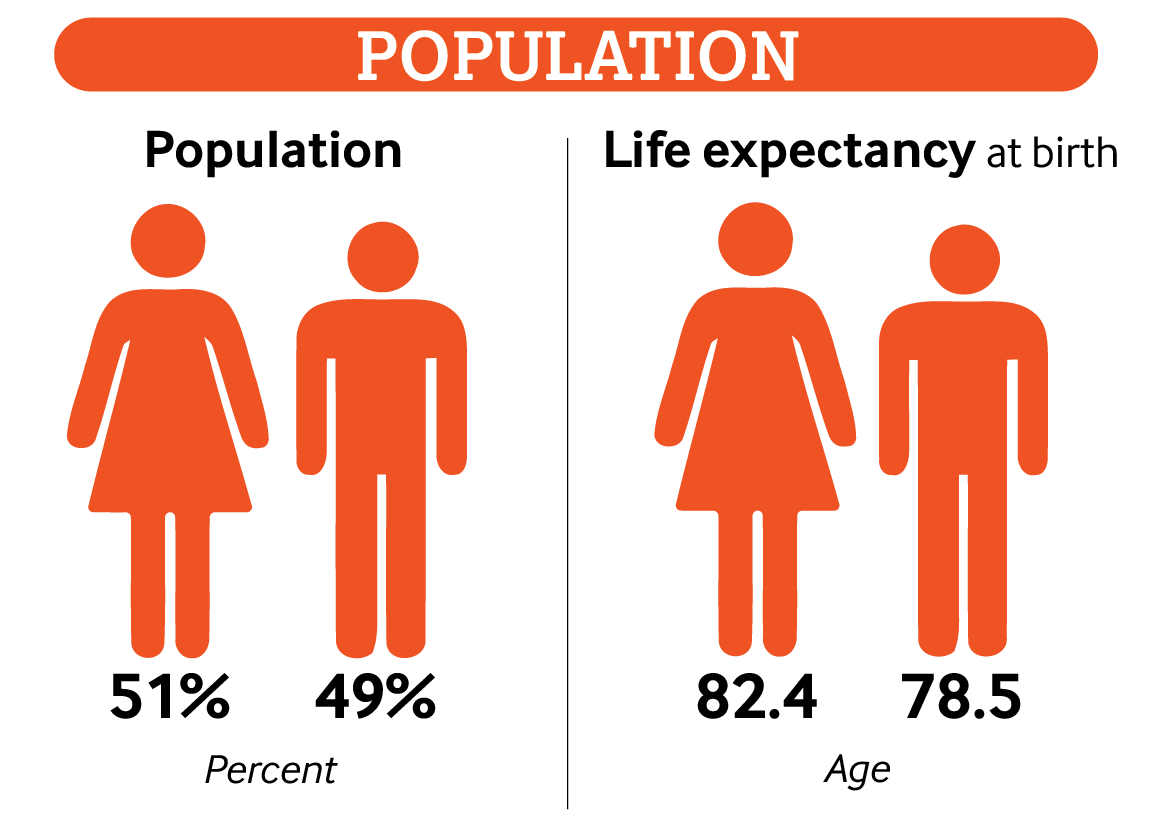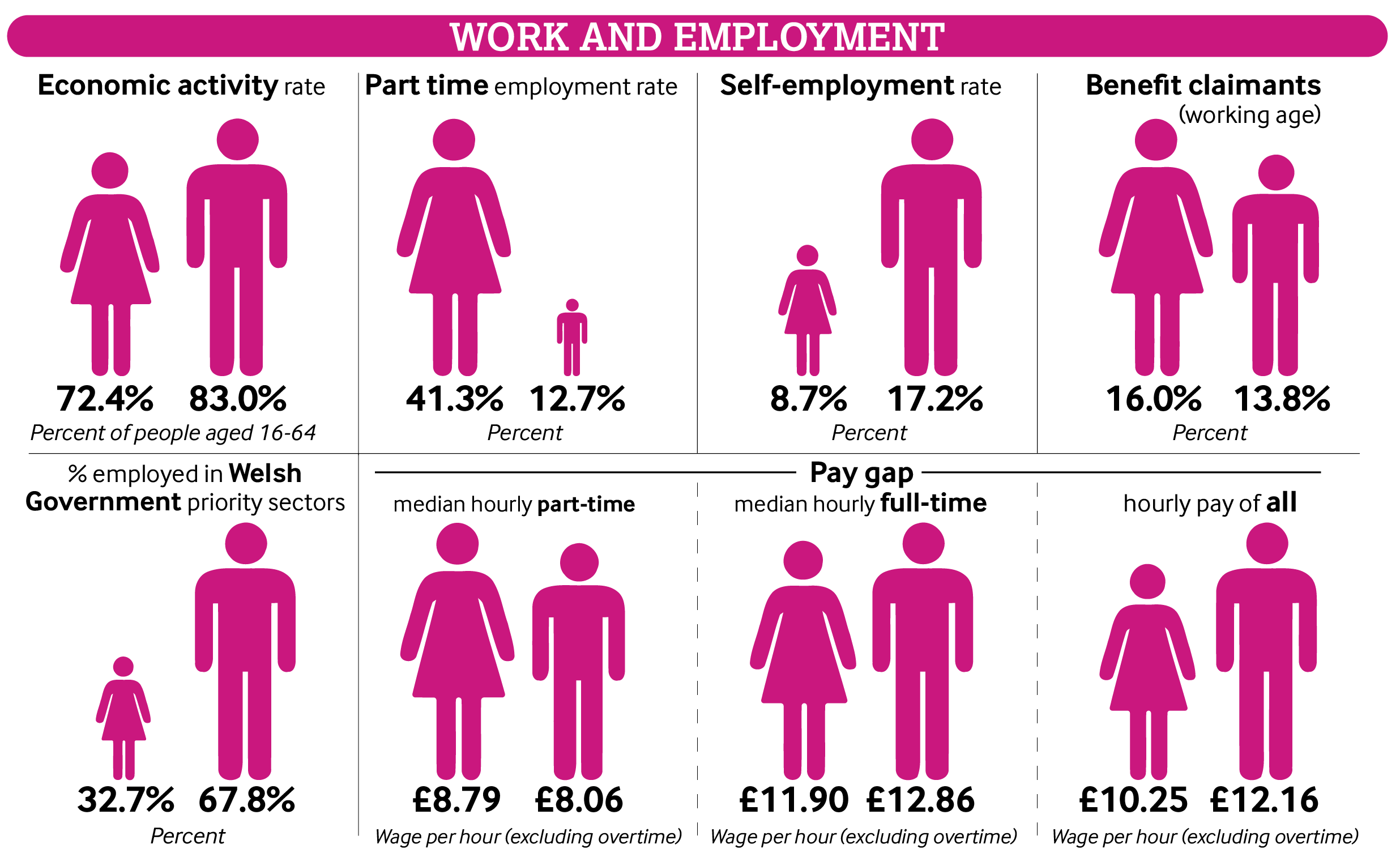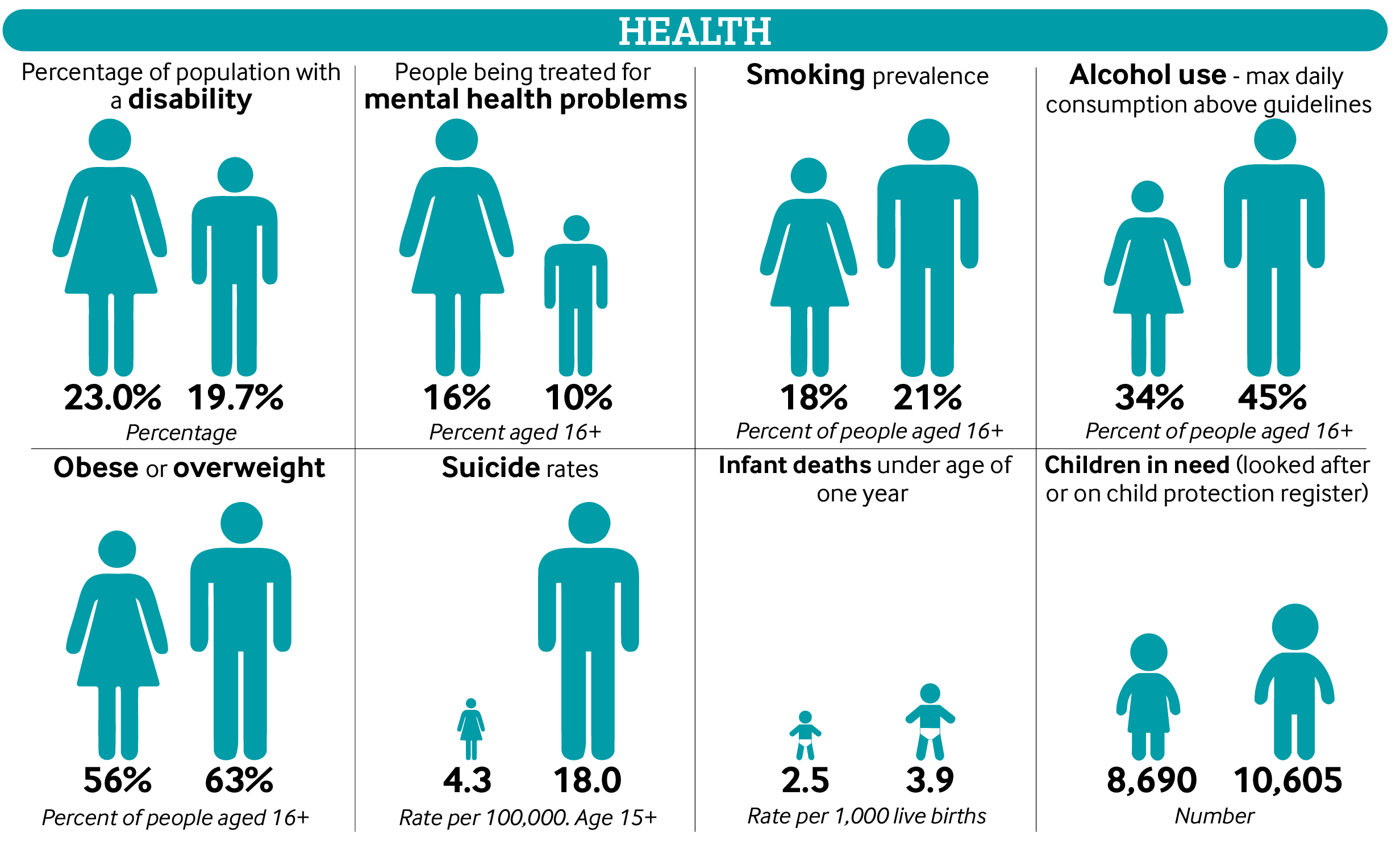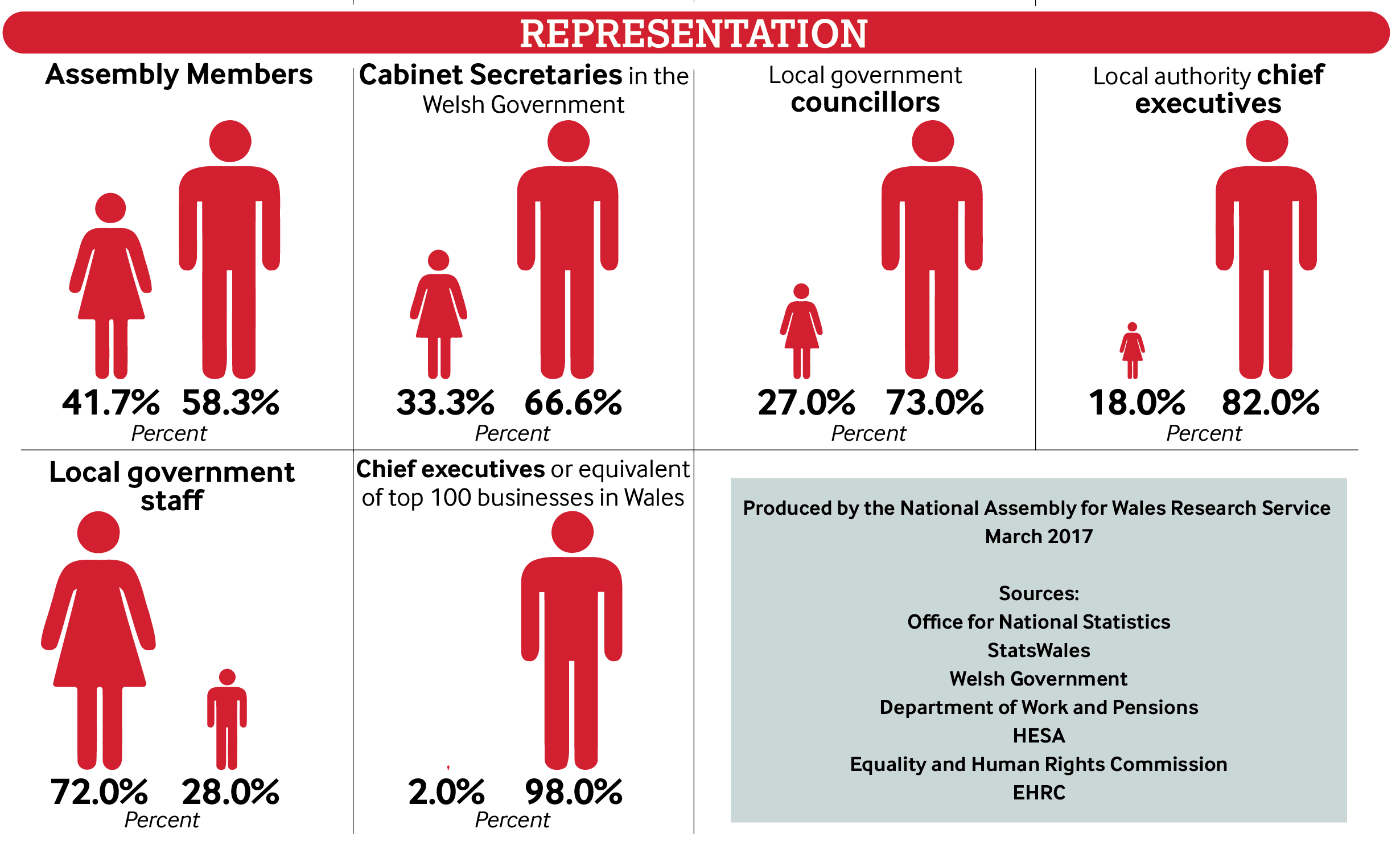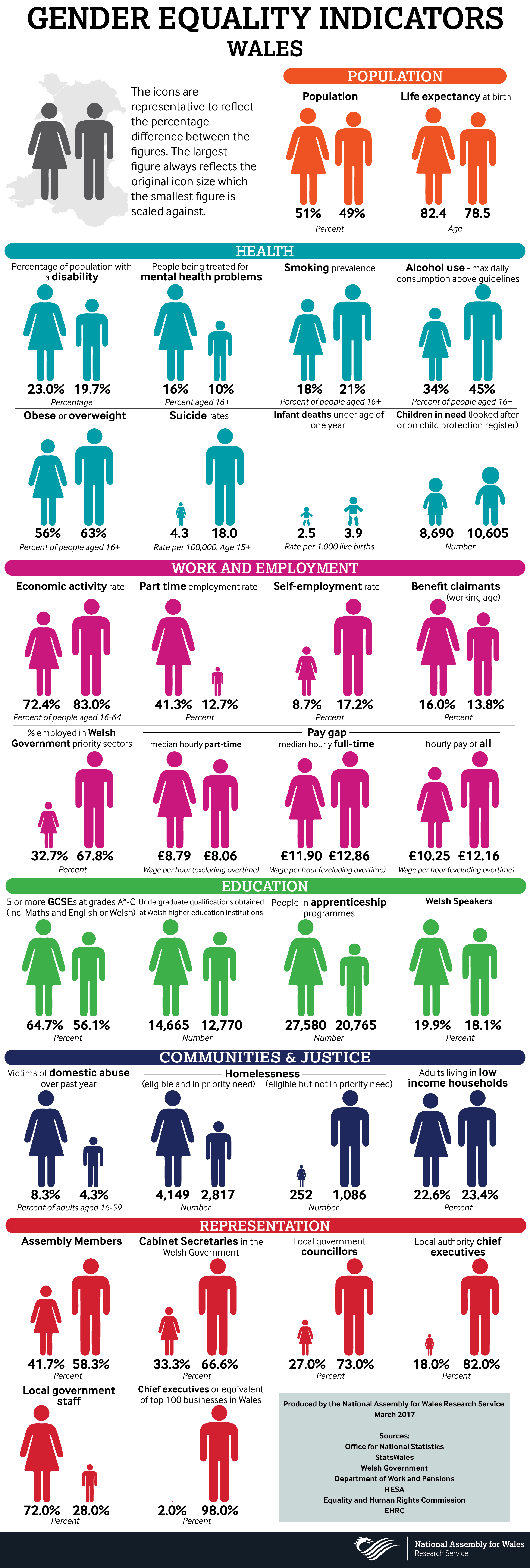The Assembly’s annual International Women’s Day debate is on 7 March 2017.
The World Economic Forum recently predicted that the global gender gap will not close for another 170 years at the current rate of progress. It ranked the UK 20th out of 144 countries for gender equality, based on a variety of indicators. Germany, Norway, France, Ireland and Rwanda all ranked higher than the UK.
But what does the gender gap look like in Wales? The Research Service has developed a set of Welsh gender equality indicators based on the best available statistical evidence to help Members scrutinise policies, legislation and budgets from a gender perspective.
Men and women have different lived experiences (socially, culturally, economically and biologically), which affect respective outcomes in health, education, employment, income and representation. There are also cumulative effects when age, ethnicity, disability, sexuality and other factors are considered. Decisions about these issues will affect women and men in different ways, depending on their starting point. Some conclusions from the dataset are outlined below.
Population
- 51% of the Welsh population are women, and 49% are men; there are 53,000 more women than men aged over 65;
Employment and income
- Women are less likely to be economically active than men (72% for women compared with 83% for men). The part-time employment rate for women is 41% compared with 13% for men;
- The gender pay gap between men and women is 7.5% for full-time workers, and 15.7% for all workers – this means that for every £1 earned per hour by men in Wales, women earn 84p. For every £1 earned per hour by men working full-time in Wales, women earn 93p;
- Women are far less likely to be involved in early stage entrepreneurial activity or be self-employed (men are twice as likely to be self-employed than women), and slightly more likely to be claiming benefits;
- Half of all working women are employed in public administration, education and health, comprising 72% of workers in this group. In contrast, male employment is spread out across different industries. Women are less likely than men to work in a Welsh Government priority sector, representing only a third of workers employed in these sectors;
Health
- Men are considerably more likely to be obese, smoke and drink more than recommended, and have lower life expectancies;
- Men are also significantly more likely to commit suicide, but women are more likely to be treated for mental health problems;
Education and skills
- Boys are less likely to achieve 5 GCSEs at grades A*-C. Women aged 19-24 are more likely to not be in education, training or employment (NEET) than men, but at aged 16-18 they are slightly less likely to be NEET;
- 20% more women than men received undergraduate qualifications in Wales in 2014/15, and were more likely to be in apprenticeship programmes;
Communities and justice
- 8.3% of women aged 16-59 in Wales were a victim of domestic abuse during the past year (ending March 2016), compared with 4.3% of men. Within this figure, 3% of women were victims of sexual assault, compared with 0.5% of men, 6.5% of women were victims of partner abuse, compared with 2.7% of men, and 4.4% of women were victims of stalking, compared with 3.5% of men;
- Women are more likely to be homeless and in priority need, whereas men are more likely to be homeless and not in priority need;
- Poverty rates are not significantly different for women and men, but households at high risk of poverty, such as lone parent households, are much more likely to be headed by women.
Representation
- The proportion of women Assembly Members has fallen to 41.7% (from 50% in 2003), and 33% of the Welsh Government Cabinet are currently women. The UK Parliament’s Welsh Affairs Select Committee has one of the lowest proportions of women MPs at just one (9%);
- In local government, only 18% of chief executives are women, and 27% of councillors. This is in stark contrast to local authority staff, of which 72% were women in 2014;
- In 2014, only 2% of Wales’s top 100 businesses had a woman chief executive.
Which additional indicators would you like to see included? What data is not currently collected at a Wales level, or disaggregated by gender?
Article by Hannah Johnson, David Millett and Gareth Thomas, National Assembly for Wales Research Service.
This post is also available as a print-friendly PDF: The gender gap: launch of gender equality indicators for Wales(PDF, 621KB)




